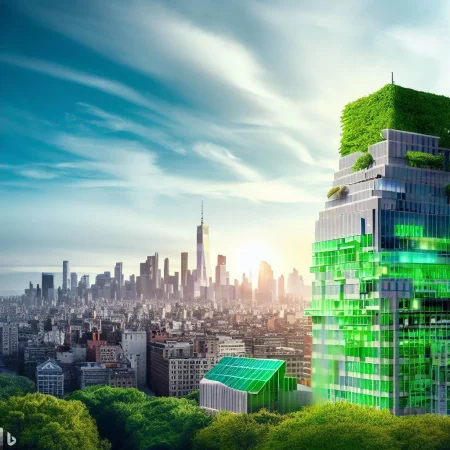Green Skyscrapers: The Future of Sustainable Architecture in NYC
New York City’s skyline is transforming once again not through height, but through purpose. As the global conversation around climate resilience intensifies, the city that once defined modern architecture through glass and steel is now pioneering a new aesthetic: sustainability. From Midtown to Hudson Yards, developers, architects, and investors are converging around one vision the green skyscraper. These structures represent a fusion of design, technology, and environmental responsibility that could redefine how cities grow in the twenty-first century.
The Rise of Sustainable High-Rise Design
The shift toward sustainable architecture in New York is both a response to regulation and a reflection of market evolution. Local Law 97, which mandates steep reductions in building emissions by 2030, has forced developers and property owners to rethink the fundamentals of design. Yet beyond compliance, a new generation of architects is viewing sustainability as an opportunity rather than an obligation.
Modern skyscrapers in Manhattan are now being built with a different set of priorities energy efficiency, carbon neutrality, and environmental integration. Glass façades are being replaced or re-engineered to reduce thermal loss. Photovoltaic panels are becoming integral to exteriors, and green roofs are being used not just for aesthetics but for biodiversity and stormwater management. Building management systems are powered by AI, optimizing energy use in real time.
Developments such as One Bryant Park and The Spiral in Hudson Yards have already set new benchmarks for sustainability. Both projects integrate air filtration, water recycling, and advanced ventilation systems that dramatically lower emissions while enhancing occupant well-being. This is not a trend it is the architectural foundation of the next generation of cities.
Capital Meets Climate Responsibility
Investors are recognizing that sustainability is no longer a niche value proposition but a financial necessity. Institutional capital, from pension funds to private equity, increasingly requires environmental, social, and governance alignment in property portfolios. Green-certified buildings command higher occupancy rates, attract long-term tenants, and secure better financing terms.
In a city where real estate remains one of the most significant asset classes, these economic incentives are accelerating the adoption of sustainable design. Banks and insurers are recalibrating their lending criteria, rewarding developments that exceed environmental standards. Construction firms are forming alliances with tech companies to integrate data analytics, renewable materials, and circular construction practices.
At the same time, public investment is amplifying private ambition. State-backed initiatives are funding retrofits of older office towers, converting energy-inefficient properties into carbon-conscious spaces. The collaboration between government and capital is creating a blueprint for sustainable growth that other global cities are now studying closely.
From Concrete Jungle to Living Ecosystem
Beyond the economics, the cultural narrative around New York’s architecture is evolving. The city that once symbolized industrial power is repositioning itself as a leader in ecological innovation. Architects now speak of “living buildings” structures that generate their own energy, clean their own air, and contribute positively to their surroundings.
Green skyscrapers are not just about materials or technology; they embody a shift in philosophy. They are designed for interaction with the environment, not dominance over it. Vertical gardens, sky terraces, and natural ventilation systems are redefining what it means to live and work in dense urban environments. The integration of biophilic design connecting people with nature through light, greenery, and spatial flow is proving not only healthier for occupants but also more profitable for owners.
This movement also reflects a broader civic identity. New York’s commitment to climate leadership is becoming a brand in itself, attracting global talent, sustainability-focused startups, and investors seeking to align growth with conscience. The city’s architectural evolution is now part of its economic strategy one that fuses innovation, culture, and environmental integrity.
Conclusion
The rise of green skyscrapers signals more than a design revolution; it marks a philosophical and financial reorientation of how cities are built. For New York, it is a reaffirmation of its capacity to reinvent itself to move from industrial grandeur to sustainable sophistication.As architects, developers, and policymakers align around a shared vision of carbon-conscious growth, the skyline is being rewritten not just as a collection of buildings but as a statement of intent. The future of New York architecture will not be measured solely in stories, but in sustainability. And in that future, every skyscraper is not just part of the city’s horizon it is part of its solution.




